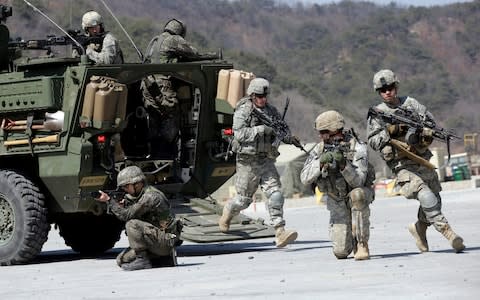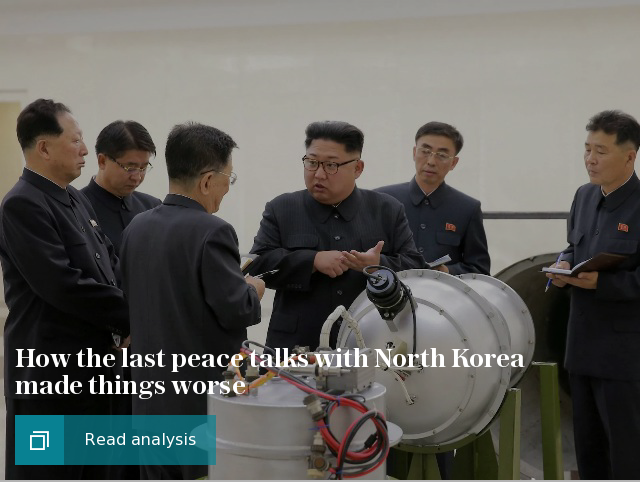US and South Korea to begin 'lower key' military drills as tensions cool with North

South Korea and the United States will on Friday commence postponed military exercises although the manoeuvres appear to have been scaled back amid a diplomatic thaw on the Korean peninsula.
The drills, which are seen as a preparation of invasion, are likely to be shorter in length and smaller in scale than last year, when the threat of conflict was higher amid missile tests and a war of words between President Donald Trump and Kim Jong-un.
This year's drills were initially postponed to avoid clashing with the Winter Olympics, while Washington is now pursuing a diplomatic solution to Pyongyang’s nuclear and ballistic missile programmes.
Defence officials from South Korea and the US announced on Tuesday the outline of the Key Resolve and Foal Eagle exercises, which usually commence in February and run for two months.
This year’s drills will begin on April 1 and it is widely expected that they will be concluded before the end of the month, when Moon Jae-in, the South Korean leader, travels to the border village of Panmunjom to meet Mr Kim ahead of a possible summit between the US and North Korean leaders.

South Korea’s Ministry of National Defence insisted in a press release that the drills “will be conducted at a similar size to previous years”, adding that the United Nations Command has informed North Korea of the schedule for the drills and reiterated that the exercises are defensive in nature.
Some 3,600 US troops were transferred to South Korea for last year’s exercises, linking up with the 28,000 American personnel stationed on the peninsula and South Korean units. Last year’s show of force was bolstered by the presence of the USS Carl Vinson, an aircraft carrier that carries more than 70 aircraft, as well as a nuclear-powered submarine and B1-B Lancer strategic bombers.
Those are not expected to take part in this year’s exercises, while local media have also reported that Seoul and Washington are attempting to reduce the visibility of the Double Dragon component of the larger exercise, which simulates a landing by the US Marines in the event of a conflict breaking on the peninsula.
There has been no official response from the North to the confirmation of the dates for the exercises, although state-run media has repeatedly demanded that the drills be cancelled entirely.

Conducting the exercises would be “an act of ruthlessly trampling even a small sprout of peace that has now been seen on the Korean Peninsula”, state media declared in February.
Washington remains committed to exerting pressure on Pyongyang, despite Mr Kim offering to hold face-to-face talks with Mr Trump, which he accepted.
South Korea, however, is far more enthusiastic about negotiating an end to the stand-off that has divided the peninsula since the end of the Korean War in 1953 and is believed to have lobbied for a lower profile for the exercises.
Seoul appears to be deeply concerned about upsetting Mr Kim and seeing diplomatic moves to date fail.
On Monday, it was announced that the South Korean Air Force chief of staff and the head of the Defence Acquisition Programme Administration would not attend a ceremony at the Lockheed Martin plant in Fort Worth, Texas, to mark the hand-over of the first batch of F-35A Lightning II stealth fighters. The 40 state-of-the-art aircraft cost GBP4.86 billion and are key component of the South’s “kill chain” pre-emptive strike capability.
“It is hard to understand why the government is scaling down the ceremony for the fighter jet, which is a key weapon in our response to North Korea’s threats, although there has been no change in the cross-border military confrontation”, a retired general told the Chosun Ilbo newspaper.

 Yahoo Sport
Yahoo Sport 





































